From breathtaking natural landscapes to iconic landmarks and local favorites, we’ve got something for every traveler. So pack your bags, book your Vietnam Tour Packages, and get ready to experience the very best that Kon tum has to offer!
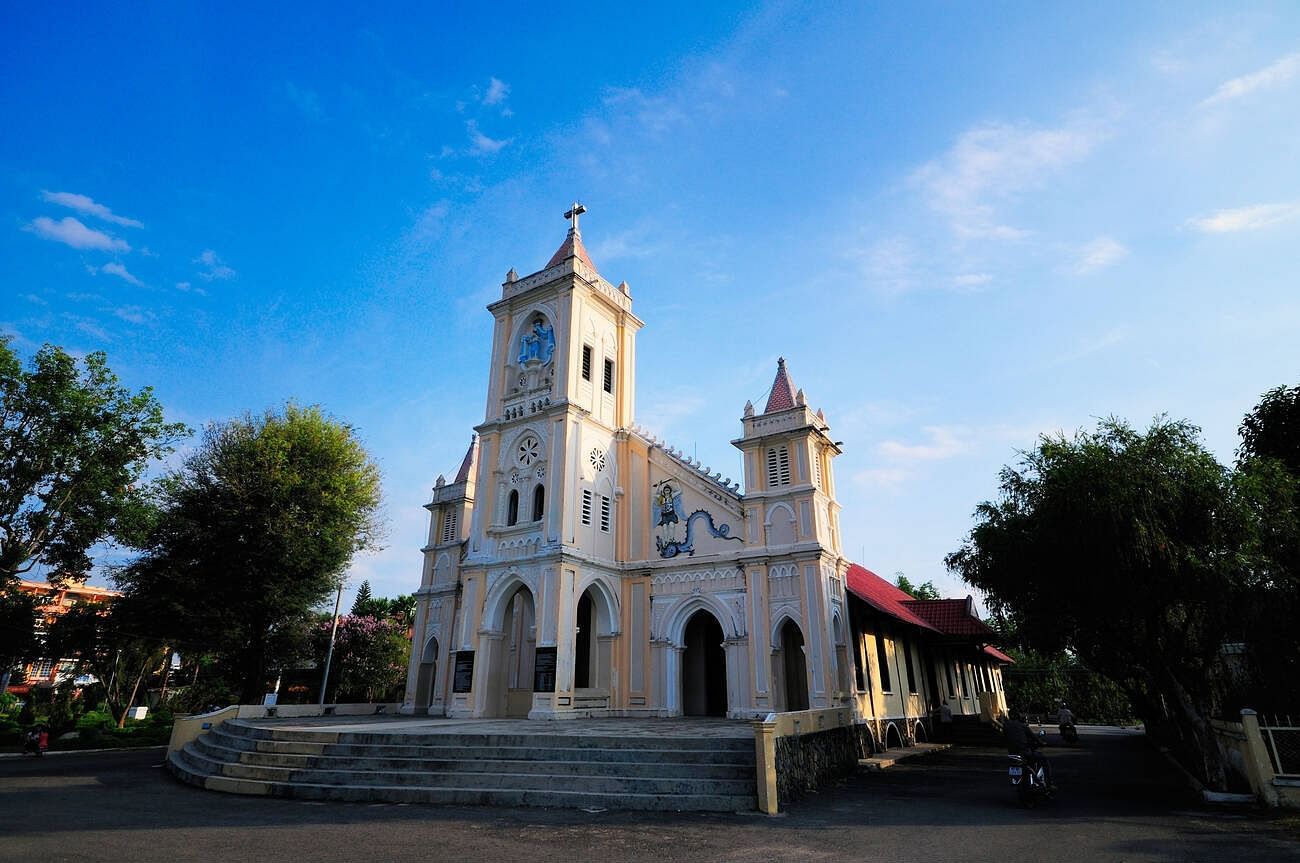
5 Places to Visit in Kon Tum: Vietnam’s Coastal Treasure
Table of Contents
Table of Contents
- KonTum at a glace
- Guide to the best places to visit in Kon Tum
- How to get to Kon Tum
- Best time to visit Kon Tum Vietnam
KonTum at a glace
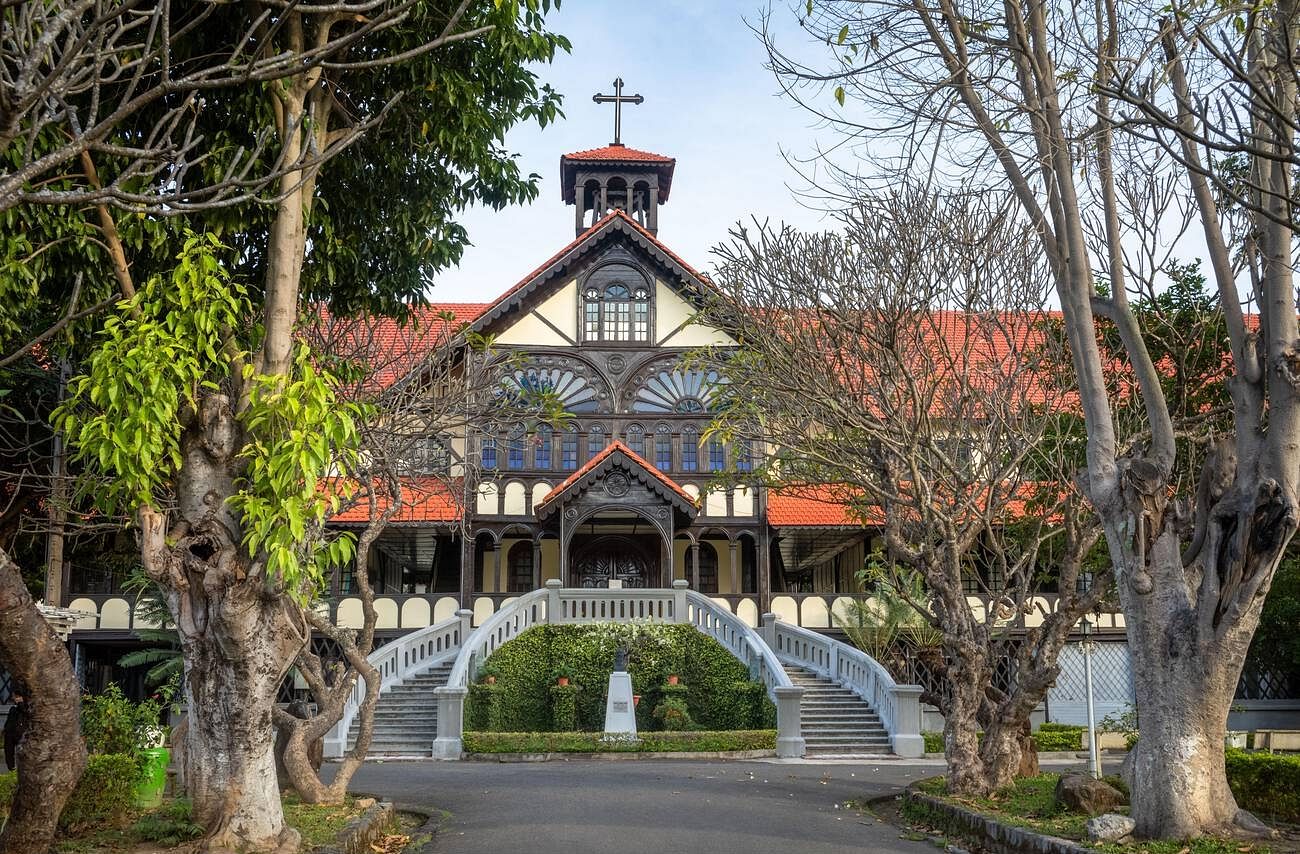
Located along the banks of the Dak Bla River, Kon Tum is one of the best places to visit in Vietnam and is enveloped by verdant forests, undulating hills, and picturesque rice fields. Its distinctive landscape promises awe-inspiring views and ample opportunities for nature exploration.
Noteworthy Tourist Sites:
Among the top places to visit in Kon Tum is the wooden church, erected by French missionaries in 1913. Its rustic allure renders it one of Vietnam’s most captivating churches. Another one of the top places to visit in Kon Tum is the Kon Tum Suspension Bridge, stretching across the Dak Bla River, and offering panoramic vistas.
Cultural Delights and Festivities:
Travelers can delve into local culture by venturing into ethnic minority villages like Bahnar or Gia Rai, where they can witness traditional weaving techniques and enjoy performances showcasing the rich musical heritage. The annual Kon Klor festival, held during March-April, commemorates the harvest season with lively dances, musical performances, and food festivities.
Local Cuisine:
Kon Tum’s culinary scene boasts regional delicacies, including bamboo-tube rice (com lam), grilled chicken with sticky rice cakes (banh day), and fragrant beef noodle soup (bun bo) served in the best restaurants in Vietnam.
Outdoor Pursuits:
For adventure seekers, exploring Yok Don National Park’s cascading waterfalls or trekking through dense jungle trails offers the best adventure activities in Vietnam. During the dry season from November to April, rafting down the Dakbla River presents an adrenaline-pumping adventure amidst breathtaking scenery and one of the best spots for rafting in Vietnam.
In summary, if you crave places to visit in Kon Tum Vietnam blending natural splendor with cultural immersion, Kon Tum beckons! With its historic wooden church, vibrant ethnic villages and festivals, delectable local cuisine, and thrilling outdoor pursuits, Kon Tum promises an unforgettable journey.
Guide to the best places to visit in Kon Tum
For a unique and authentic travel experience in Vietnam, don’t miss Kon Tum, a city in the Central Highlands known as the “.” In Kon Tum, you can dive into the rich and diverse world of Vietnamese coffee production, consumption, and culture, while also exploring the intriguing traditions, languages, religions, and architecture of the ethnic minorities in the surrounding hill-tribe villages.
Additionally, Kon Tum offers scenic and tranquil natural landscapes, including forests, waterfalls, flowers, and rivers. These Vietnam travel tips will serve as your ultimate guide to places to visit in Kon Tum, covering the top attractions, activities, and tips for your visit.
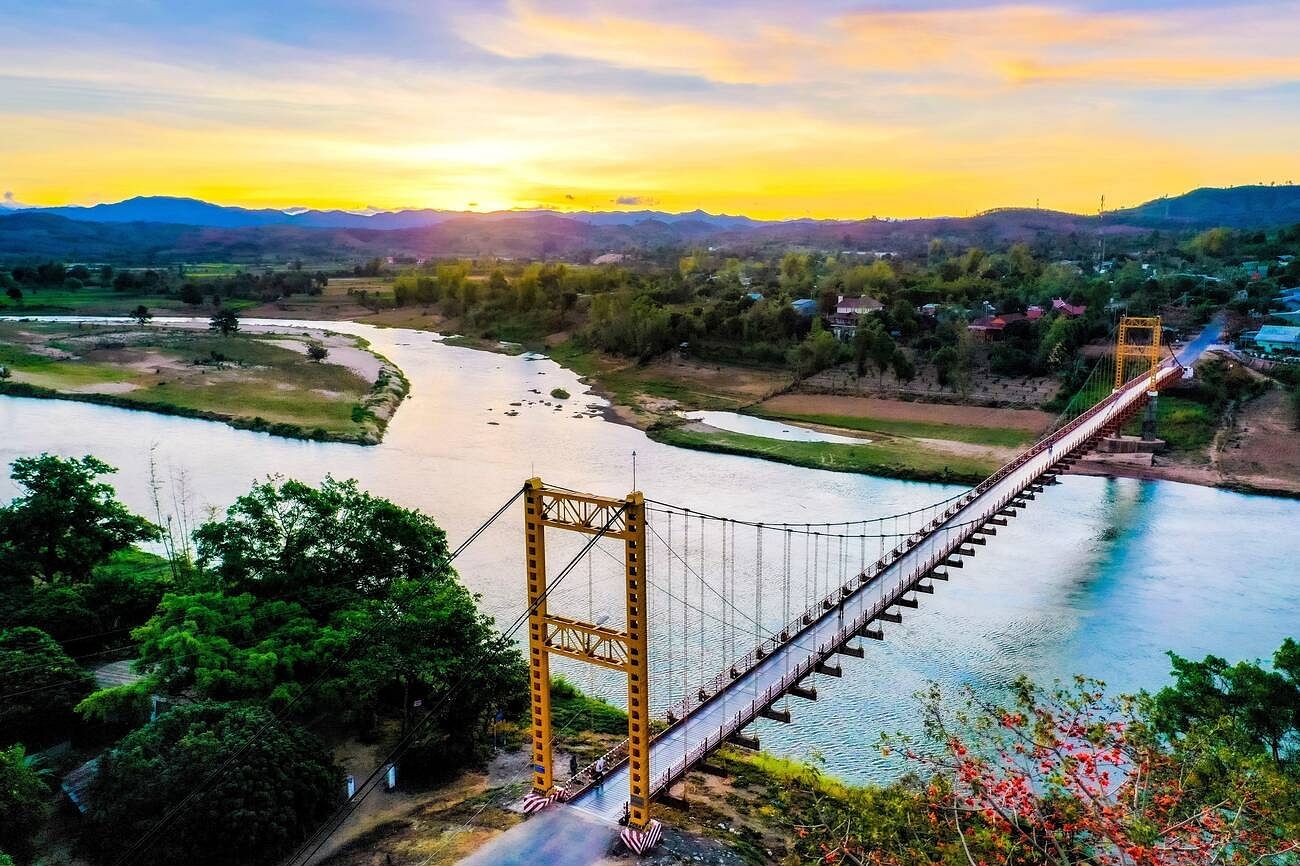
- Kon Klor Suspension Bridge
Spanning the DakBla River, which uniquely flows from east to west, the Kon Klor Suspension Bridge is one of the largest in Central Vietnam and the best places to visit in Kon Tum Vietnam. It links Kon Tum City with Dak Ro Wa Commune at the end of Bac Can Street. Construction began on February 3, 1993, and was completed on May 19, 1994.
The bridge is 292 meters long and 4.5 meters wide, made entirely of iron, and has a load capacity of 10 tonnes. Its striking orange-yellow color makes it a prominent feature on the Dak Bla River.
The bridge’s design is inspired by the T’rung lute, a traditional bamboo pipe instrument of the Central Highlands ethnic minorities. While it may not boast the grandeur of other bridges, Kon Klor Bridge possesses a rustic charm that reflects the simplicity of the mountain residents.
The Kon Tu Rang suspension bridge, located 12 km from Mang Den town, attracts many tourists for photo opportunities and is one of the top attractions in Kon Tum.
The Kon Tu Rang Bridge connects the two banks of the Dak Bla River to Kon Klor village. Built in 1994, the bridge is 292 meters long and 4.5 meters wide. Among the three suspension bridges in the area—Kon Tu Rang, Pa Sy, and Dak Ke—Kon Tu Rang is considered the most photogenic due to its integration with the surrounding landscape.
Its orange-yellow ends make it a standout feature on the river, serving as both an important transportation project and a cultural and tourist symbol of Kon Tum province.
You can reach the bridge by motorbike, car, or bus, but you must walk to cross it. There is no fee to access the Kon Tu Rang suspension bridge, but visiting Kon Klor village across the river costs 10,000 VND per person. Visiting the bridge typically takes 1-2 hours, depending on whether you want to take photos or explore the surroundings.
Kon Tu Rang suspension bridge is perfect for photography. To get the best photos, it is recommended that there is good weather and clear skies.
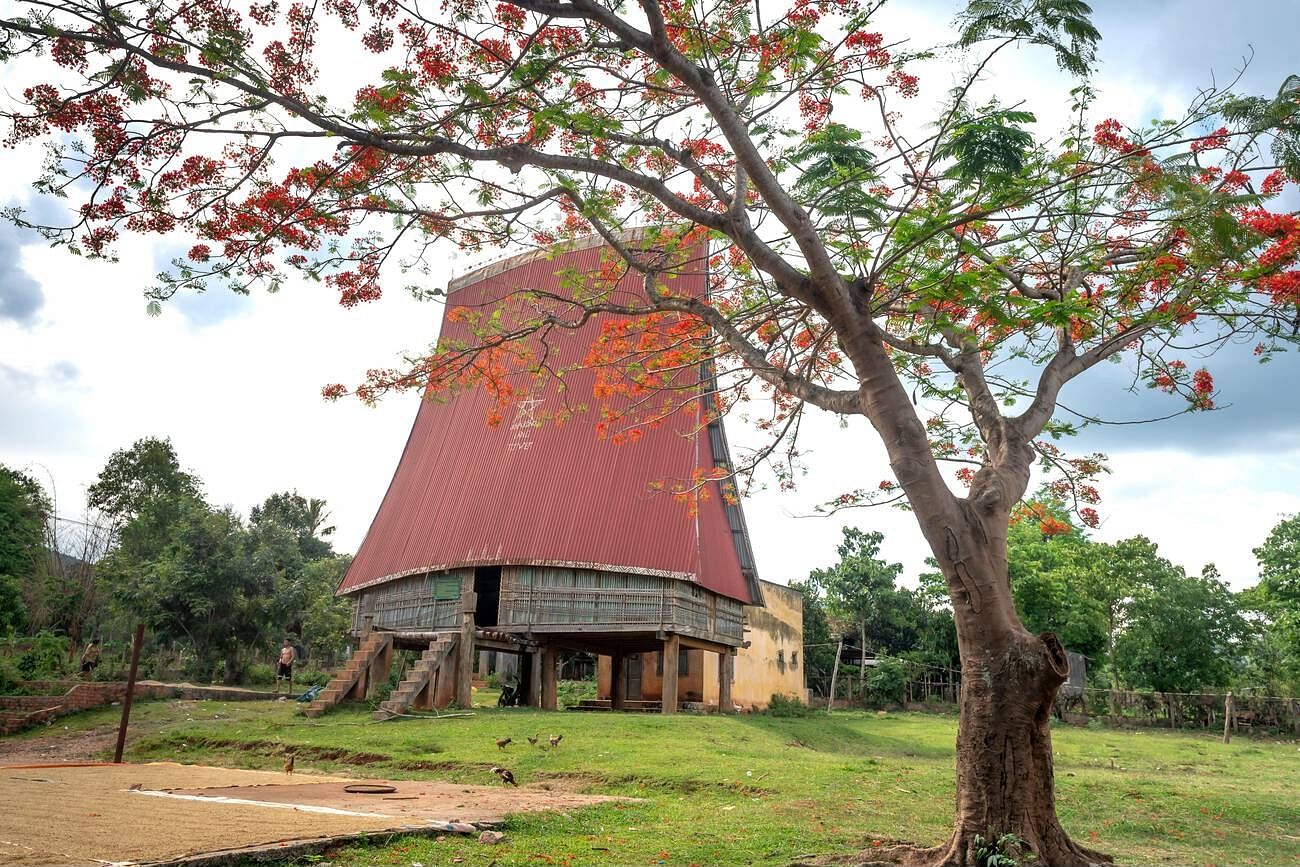
- Kon Tum Cultural Museum
This museum is one of the top attractions in Kon Tum, featuring excellent lighting and clear English descriptions that detail local religious and spiritual life. Exhibits include information on the iron forges of the Sedang (Xo Dang) people and the importance of gongs to Vietnam’s hill communities, with the country’s gong culture recognized by UNESCO as an Intangible Cultural Heritage of Humanity.
Notable highlights include an impressive log coffin and a musical instrument called a trung, which is a marimba made from bamboo tubes.
Kon Tum Museum showcases over 20,000 artifacts and documents related to the history and culture of ethnic groups in the Northern Central Highlands. This includes collections of gongs, costumes, and more. The museum, located at the gateway to Kon Tum city center next to the DakBla River, features an exterior design that mimics a traditional Rong house.
The museum houses rare collections such as the Lung Leng archaeological artifacts, tea collection, gong collection, costume collection, and ethnographic artifacts (including woodenware, bamboo, and rattan furniture). It also displays images and artifacts from various historical periods of revolutionary resistance.
Notably, the KonTum Museum is equipped with the National Intangible Culture Data Bank satellite station, built by the Institute of Culture and Arts Research. This station connects with 14 satellites nationwide to promote the traditional cultural values of Vietnam’s 54 ethnic groups.
The Northern Central Highlands is home to many indigenous ethnic groups such as the Ba Na, Xe Dang, Gie-Trieng, Gia Rai, and Brau. These groups practice polytheistic worship, venerating gods related to various aspects of their lives, including the gods of mountains, forests, lightning, water, fields, rice, houses, and villages. They also have rituals associated with the farming cycle and life events. The museum displays ceremonial clothes of the Gie-Trieng people and wooden coffins.
Additionally, the museum features artifacts and images documenting festivals of the Central Highlands ethnic groups, such as the New Rice Festival, Buffalo Eating Festival for a new Rong house, Water Drop Festival, and Grave Leaving Ceremony.
Kon Tum Museum is a valuable repository of documents, providing scientists and tourists with insights into the historical development and unique culture of the ethnic communities in the Northern Central Highlands. Immersing in the local culture is one of the best things to do in Vietnam.
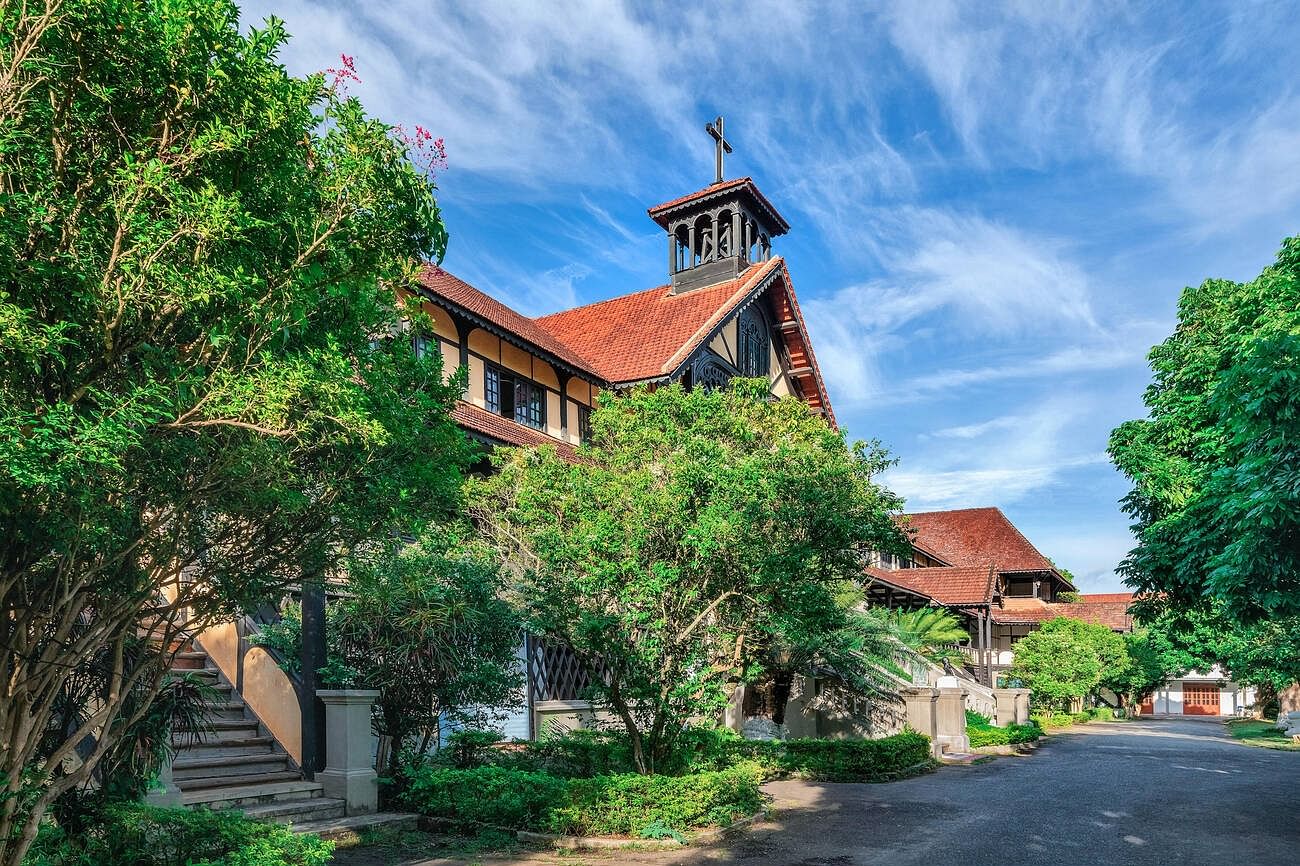
- Kon K’tu Village
Situated along the banks of the DakBla River in the Central Highlands, there lies an ancient village retaining its mountainous allure known as Kon K’Tu, located within Dak Ro Wa Commune, Kon Tum City.
This village has emerged as a hub for tourist attractions in Kon Tum Vietnam, offering a glimpse into the distinctive culture of the Ba Na ethnic group. The name “Kon K’Tu,” derived from the Ba Na language, signifies “old village” or “from the ancient,” reflecting the villagers’ pride in their centuries-old heritage.
Despite the encroachment of modernity, Kon K’Tu steadfastly preserves its traditional dwellings and way of life, which have contributed to the development of tourism in the area. In recent years, local authorities have endeavoured to transform the village into a community tourism destination.
Visitors have the option to lodge in homestays, immersing themselves in the local culture. Among the choices is the Homestay of Mr. A Kam in Kon Ko Tu village. Experience the unique wooden boat rides on the DakBla River, once the primary mode of transportation before the construction of bridges, but exercise caution, especially when the water currents are swift.
A visit to the Rong House, a communal structure at the heart of the village distinguished by its lofty, peculiar roof, is a must. Indulge in local delicacies such as Com Lam (rice cooked in bamboo), Grilled Chicken, and Pine Wine (Ruou Can). Cap off your evenings by enjoying the warmth of a bonfire, an experience typically arranged for overnight stays.
Strolling through the village offers a serene ambiance and an authentic glimpse into mountainous life. If you find yourself in Kon Tum City, allocate some time to explore this village and discover the essence of mountain living.
Currently lacking an airport, travelers often opt to journey from Hoi An to Kon Tum, a scenic route spanning approximately 6 to 8 hours by road.
For a comprehensive exploration of Kon K’Tu village and other attractions in Kon Tum, consider spending 2 days and 1 night, though a more leisurely pace can be achieved with a 3-day and 2-night stay.
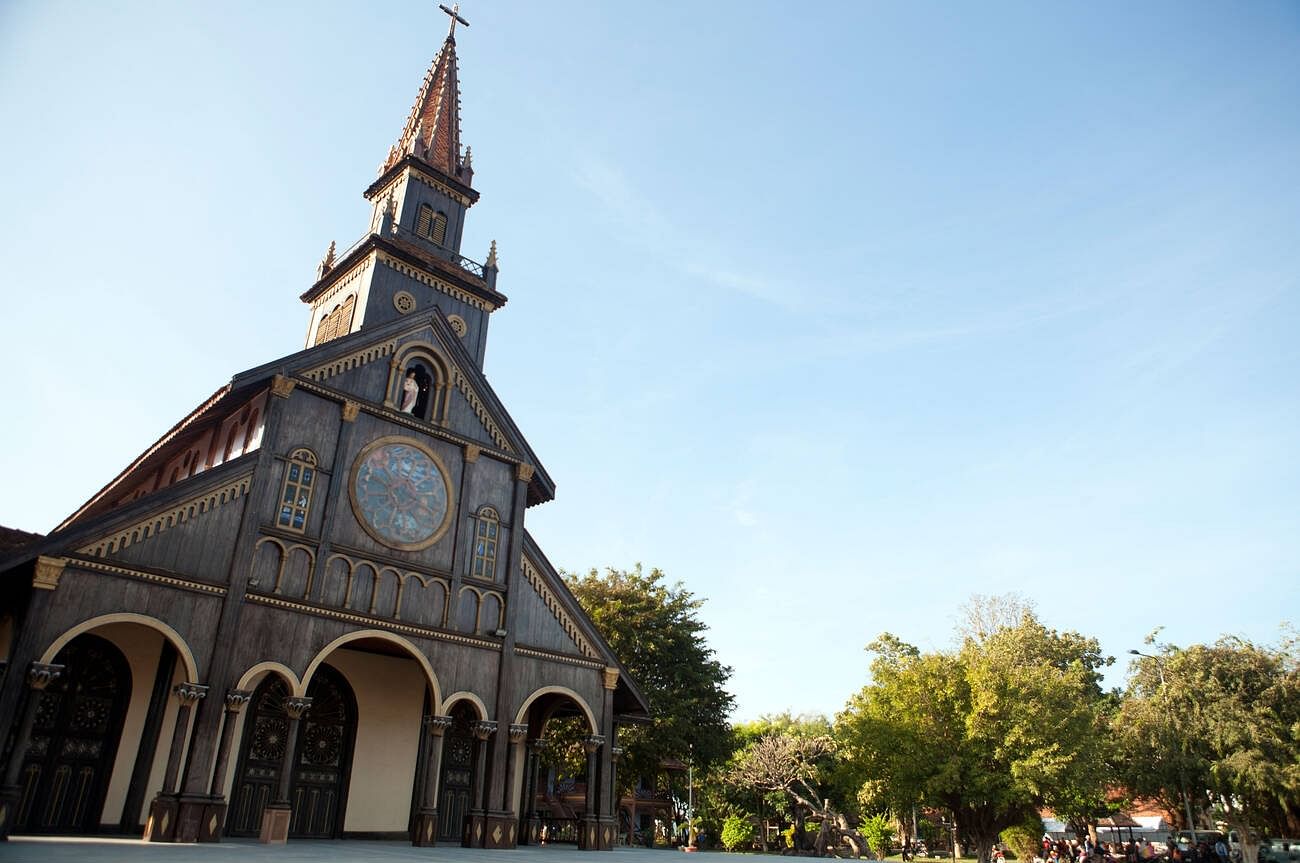
- Kon Tum Wooden Church
A must-visit attraction in Kon Tum in the Central Highlands provinces is the Kon Tum Cathedral, a century-old church crafted from exquisite wood, earning its place among the top masterpieces of wooden Catholic architecture in Vietnam and Southeast Asia.
Catholicism began to spread in the Central Highlands, including Kon Tum, during the mid-19th century, following the footsteps of Western missionaries. Initially, worship places in the area were modest, constructed from wood, thatch, bamboo, and leaves. As the number of parishioners grew, the aspiration for grander churches arose, leading to the construction of the Kon Tum wooden church.
Historical records indicate that Priest Joseph Décrouille, overseeing the Kon Tum parish, initiated the construction of the church in mid-March 1913, completing it by early 1918, despite various challenges, including the outbreak of World War I. Preparations took three years, involving the recruitment of skilled workers to harvest wood from the forest, with elephants used to transport the timber. Skilled laborers were also sourced from regions like Quang Nam, Quang Ngai, and Binh Dinh to aid in construction.
The church’s design harmoniously blends Roman architecture with the stilt house style of the indigenous Ba Na people, representing a remarkable fusion of Western culture and the regional identity of the Central Highlands.
Dubbed a wooden church due to its primary construction material sourced from the abundant forests of the Central Highlands, the church’s structures, including columns, trusses, and floors, are meticulously crafted from wood, connected with tenons without nails. Ceilings and walls are plastered with earthen materials mixed with straw, reminiscent of traditional Central Vietnamese houses, with no reinforced concrete or mortar used.
In a report to the Paris Foreign Missions Society in 1913, the Apostolic Vicar of Eastern Cochin Grangeon emphasized the necessity of using wood, citing its superior quality and likening the church to a cathedral in its grandeur.
Externally, the church stands as a tall and imposing structure, its aged wood and weathered tile exuding a dignified aura. A 24-meter-high bell tower stands proudly at the front, providing a sense of balance and harmony to the entire edifice. The expansive two-winged corridor, adorned with high-sloping roofs supported by sturdy round wooden columns, echoes the communal roof style of the Ba Na people.

- Dak To Airstrip
Situated approximately 50 kilometers north of Kon Tum, this renowned US base held significant strategic importance, witnessing numerous battles over the years. Serving as a pivotal launch point for missions into the surrounding mountains and ‘Across the fence,’ the base was at the forefront of action due to its proximity to the Ben Het Special Forces Camp, near the tri-border area with Laos and Cambodia.
During the hill fights in 1967 and the November 1967 Battle of Dak To, the base was heavily utilized, enduring frequent rocket and artillery fire from Charlie Ridge to the south. This prompted regular missions to clear the ridge and maintain security.
Overlooking Dak To town to the east, the camp also borders the first Dak To camp, with remnants of the runway still visible. Today, locals utilize the old runway for agricultural purposes, showcasing its surprisingly well-preserved condition.
Located just south of the Ho Chi Minh Highway, a few kilometers from Dak To town, this war remnant museum in Vietnam is easily accessible and serves as a compelling visit for history enthusiasts, given its historical significance and convenient location for travelers heading north from Kon Tum. Dak To itself, situated north of Kon Tum, is a unique place to visit in Kon Tum for those exploring the region.
How to get to Kon Tum
Alternatively, you can fly to Pleiku, the nearest airport to Kon Tum, with flights from Hanoi or Ho Chi Minh City taking around an hour, followed by a taxi or bus ride to Kon Tum, which takes about an hour and a half.
Best time to visit Kon Tum Vietnam
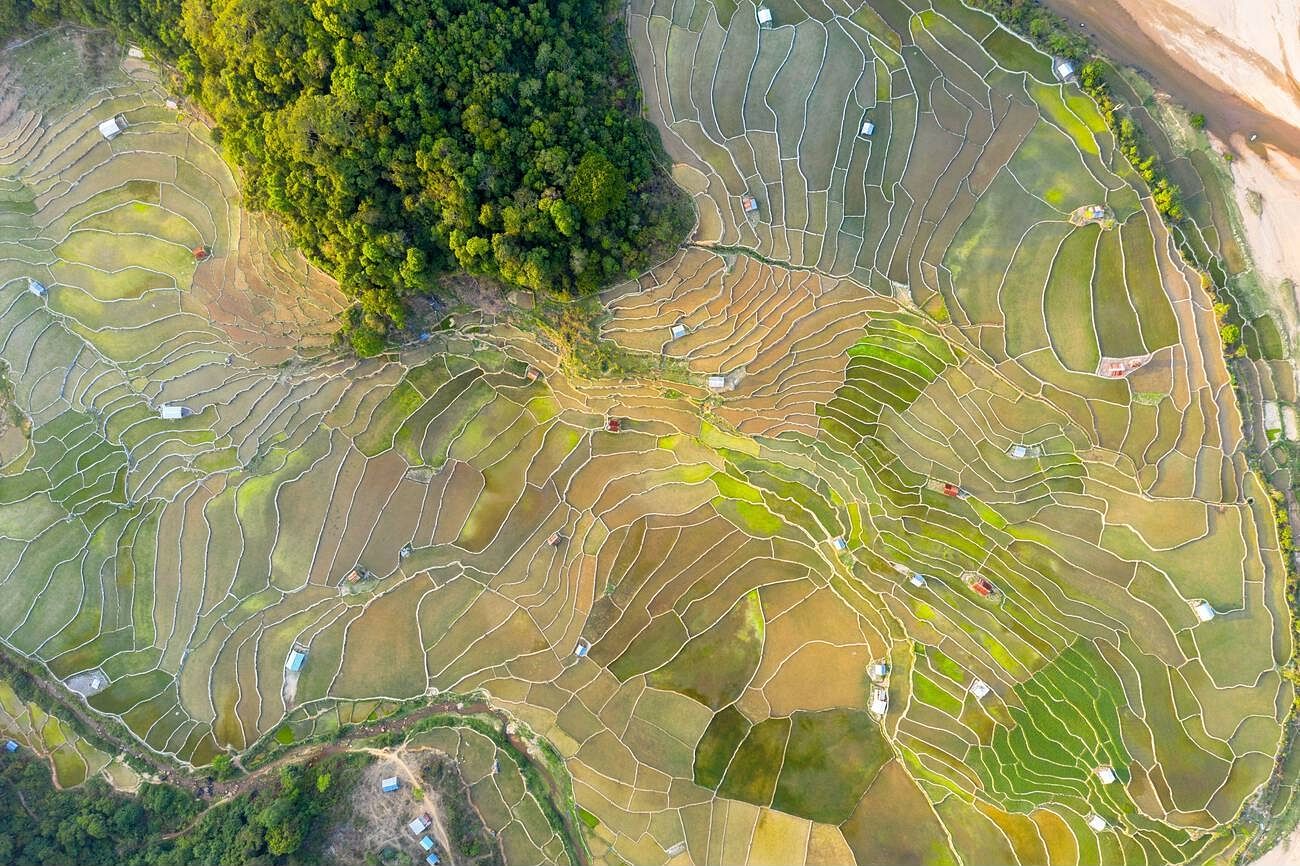
Alternatively, visiting from May to October offers wet, cloudy, and hot weather, with coffee trees in their growing or pruning stages. This season provides a chance to enjoy the lush, green scenery of the Central Highlands and explore the waterfalls and streams.
Falling in Love with Vietnam
Kon Tum, a hidden gem in Vietnam’s Central Highlands, offers a unique opportunity to explore the region’s coffee, culture, and natural beauty. It’s a place where you can experience the authentic and diverse aspects of Vietnam while enjoying the city’s relaxed and picturesque atmosphere. Kon Tum is a destination that will surprise and enchant you, making you fall in love with Vietnam.
Get exclusive travel insights & updates into your inbox!
*By clicking subscribe you'll receive emails from WanderOn.

Shrutika Parab
★★★★★24 May 2024
“Thank you Team Wanderon for the amazing Ladakh Experience. Right from the point of making the bookings with Mr. Chakshu to the point of completion of the trip received amicable support.
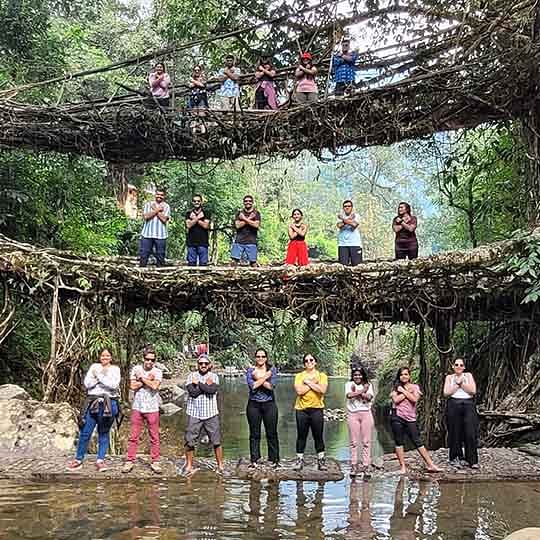
Sonal Shekhar Dash
★★★★★9 May 2024
“I did my first solo trip in India with WanderOn. Initially I was sceptical about their Meghalaya-Kaziranga trip as I didn't have any prior experience with them but the team assured me that it's going to be one of the best experiences of my life.

Archana Awati
★★★★★30 Apr 2024
“In Ladakh, find the perfect blend of culture, adventure, and serenity. December last year I decided that my next trip would be Ladakh but didn’t know how to go about it. I knew I wanted to travel in a group, as I had prior experiences of traveling in a group but wanted an organiser I could trust. Ladakh isn’t like other destinations wherein you need some instructions due to the high altitudes.
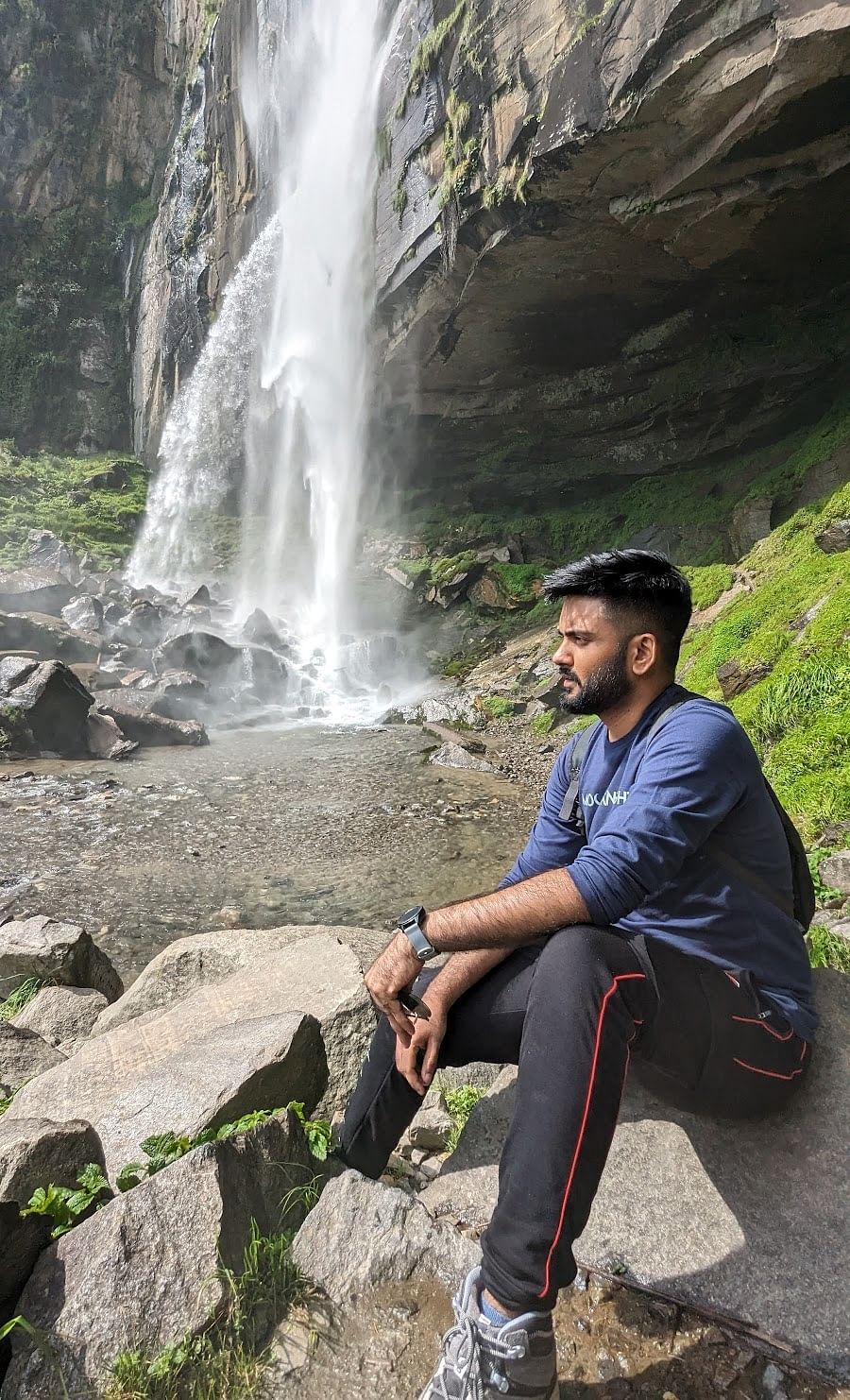
Kartik Dilawari
★★★★★4 Jul 2024
“After an amazing trip to Tirthan with WanderOn, I decided to go to Manali-Jispa with them and yet again, the experience was worth every penny. The place was very beautiful and the quality of service was top-notch, the itinerary was very good and the quality of transportation and stays were very good. Had an awesome time there and made some good friends as well. Lastly, our trip captains Priyasha and Rachit managed the entire trip very well and were so fun and made our trip an experience worth remembering.
FAQ'S
01
What are some must-visit attractions in Kon Tum?
Kon Klor Suspension Bridge, Kon Tum Cultural Museum, and Kon K’tu Village are some of the must-visit attractions in Kon Tum.
02
What outdoor activities are available in Kon Tum?
03
Are there any unique cultural experiences to enjoy in Kon Tum?
04
How can I best experience the local tribal culture in Kon Tum?
WanderOn Special

WANDERON EXPERIENCES PVT LTD
3rd Floor, Building No-436, Phase IV, Udyog Vihar, Sector-18, Gurugram, Haryana-122015


